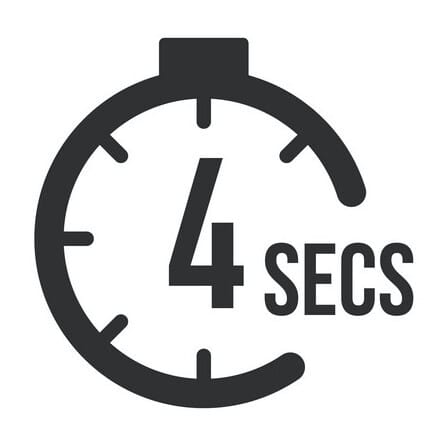- Four Minute University
- Posts
- How to use silence to make your point
How to use silence to make your point
Sometimes saying less is better
In the past week, I’ve attended presentations, watched videos and met with dozens of people. You probably do the same each week.
I notice one thing over and over. There’s a constant stream of information coming at you.
Presentations are focused on the speaker’s talking points. Speakers quickly move from one point to the next.
Videos are fast-paced with almost no downtime. They’re designed to keep your attention.
Meetings are a back-and-forth conversation where someone is talking at all times.
I feel like I need to stop and catch my breath before continuing. Sound familiar?
Silence
Let’s focus on presentations. You are in control when you give a presentation, not anyone else.
Just like chunking, you need to break up your presentations. It’s not good enough to just visually separate information out when you’re also talking.
You need to pause and use silence.

Silence is arguably the most important element to any presentation you give.
Why we don’t use silence
There are many reasons we don’t already use silence in presentations. I’ve been guilty of all of these.
It feels awkward
You know the feeling. You give a presentation and ask a question. Nobody responds. The silence goes for too long and you start to feel awkward about it. So you quickly talk again to avoid an uncomfortable situation.
Not talking = not understanding
If I’m not talking, then how will someone understand my presentation? That’s the logic we sometimes use to keep talking, even if we’ve already made our point. So we say the same things again.
Not speaking = losing control
I have 20 minutes to give a presentation. You better believe I’m going to talk the whole time! We often equate time with control. What better way to control my presentation than by talking for all of it, right?
The tricky part is all of these sound valid. Yet science tells us that these techniques in fact make it more difficult for people to understand your presentation.
Golden Silence
You may have heard the term Golden Silence. It’s used in sales, counseling and of course, presentations.
The idea is simple: after you ask a question, make a statement or tell a story, wait for 4 seconds before speaking again.

When you ask a question, you need to give people time to think before they answer.
When you make a statement, you need to allow your audience to process what you told them before they can get any new information.
When you tell a story, you need to make space for your listeners to connect it to the topic.
Look at kids to understand adults
Children’s educational shows, such as Blue’s Clues, have long understood the importance of silence. Whenever a question is asked, there are 4 seconds of silence before another word is said.

NY Times 2019 article
The same applies to adults as well. We need time to process whatever information we receive.
How to use silence when you present
Follow these simple tips to use Golden Silence to your advantage when presenting:
To let people read
The biggest mistake I see people make when giving presentations is they read their text-heavy slides out loud. If you show a slide that has a lot of text on it, people will start reading it, whether you want them to or not. You can say, “take 15 seconds and read this” while being silent. I do it all the time. It works very well.
To emphasize something
We all want to believe everything we say in a presentation is important. When used at the right time, a moment of silence can increase your audience’s attention and interest.
To avoid filler words
Anything you can do to avoid filler words (umm, ah, you know) is a plus. Instead of trying to say something, try to say nothing while you gather your thoughts.
To engage your audience
The best presentations have fully engaged audiences. Silence helps them mentally catch up and reflect on what you say. Plus, it gives them time to ask questions.
To control your pace
You’ve probably been in a presentation where the speaker talks too fast. Less experienced presenters tend to talk faster when they’re nervous. Take a pause and use silence every few minutes to better control your pace.
A few notes
Languages
Golden silence works in any language. Sometimes, I’ll hear people say this doesn’t apply to Spanish speakers. They speak more words per minute. Your brain still works the same way, regardless of what language you speak. You need silence to help process your thoughts.
Silence > pause
I prefer the term silence over pause. Silence is an active yet quiet part of your presentations. Pause implies temporarily stopping everything, similar to pausing a video. Silence is more powerful than pauses.
Key takeaway
Silence can have a greater effect than anything you say. Use it wisely and you will see how saying less is often a better strategy.
Thanks for reading.
See you next week,
Nabeel